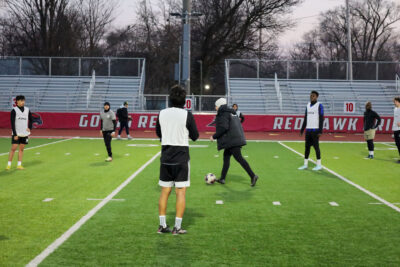The digital revolution has not been kind to dead-tree books. As I’m sure the bookstore has told you several times over, the electronic editions of your favorite literature are cheaper than their bound relatives, not to mention less likely to collect dust and turn yellow with age.
But there are some functions of computerization that don’t translate well from the tactile to the touchscreen. It’s April, which means (despite Mother Nature’s evidence to the contrary) that baseball season is beginning—and that brings to mind one such function.I’m referring to the practice of scoring baseball and softball games, which entails keeping not just the total score but a running log of the game, both batter by batter and inning by inning. The scorer uses a mix of letters, numbers and strategically placed lines to denote the events that unfold. If that seems a little bit too much like high school geometry, I apologize (though my geometry teacher was an avid scorer).
There are all sorts of places to learn how to score, and most of them are right, so I’ll leave that alone. Certainly the technical side of the scoresheet — and the subtle differences between scorers — are part of the intrigue, but the process is the most therapeutic part. The book and its record contain a prod to keep going, to maintain your focus on a game that occasionally — between coaching signs, mound visits and players … shall we say … adjusting themselves — becomes a bit of a drag.
“Scoring and short attention spans are not compatible,” you say. That’s very much true. But it’s not a bug, it’s a feature. Moreover, it’s not a feature of the method but of the game: baseball and softball are sports that force you to slow down and smell the roses, as opposed to the constant action of football, hockey and certain intramural soccer teams.
As we wrap up another semester, maybe it’s not a bad time to advocate for winding down and thinking about a slow, long haul rather than a burst of intensity. Plus, once you start scoring, you’ll be able to place superfluous meaning on all sorts of things: in the words of Sports Illustrated’s Steve Rushin, scorers “cannot look at the area code for Beanblossom, Ind. — 812 — without seeing a long throw from center field cut off by the pitcher leading to a putout at the plate.”
And if you really want to stop and smell the roses — well, you could follow all 93 golfers at the Masters.

